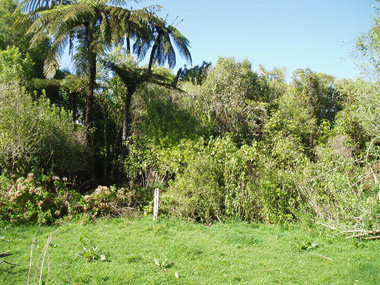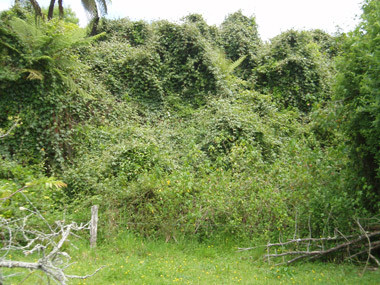
 Weed control involves the exclusion, eradication or containment of invasive exotic species. This can mean physical, chemical or biological control of a weed species. There are many different weed control methods used to protect native plant species and ecosystems. Banana passionfruit vine (Passiflora tripartita var. mollissima) smothering vegetation, West Coast (left) and after mechanical control (right). Photos by Tom Belton.
Weed control involves the exclusion, eradication or containment of invasive exotic species. This can mean physical, chemical or biological control of a weed species. There are many different weed control methods used to protect native plant species and ecosystems. Banana passionfruit vine (Passiflora tripartita var. mollissima) smothering vegetation, West Coast (left) and after mechanical control (right). Photos by Tom Belton.
- Shading - Dense planting shades out some weeds and limits their establishment
- Hand weeding - This is labour intensive but is suitable for some weeds, fragile sites or small infestations. Most weeds should be removed from the site entirely to avoid fragments or seed colonising.
- Ring barking - Suitable for woody weeds with large stems or trunks
- Mechanical weeding - This involves the use of weed eaters or rotary slashers
- Controlled grazing - This can work in instances where the weeds are palatable to grazing animals
- Biocontrol - The introduction of biological agents such as insects or fungi can be usedto control specific weeds such as the willow saw fly on willows
- Herbicide use (chemical weeding) - These are applied to cut stumps or sprayed onto leaves and injected into trunks.
To search for information about exotic plants in New Zealand and how to control them:
For more information see*:
- Weed information - Landcare Research
- Weed control - Te Ara Encyclopedia of New Zealand
*The Network is not responsible for the content of external internet sites
